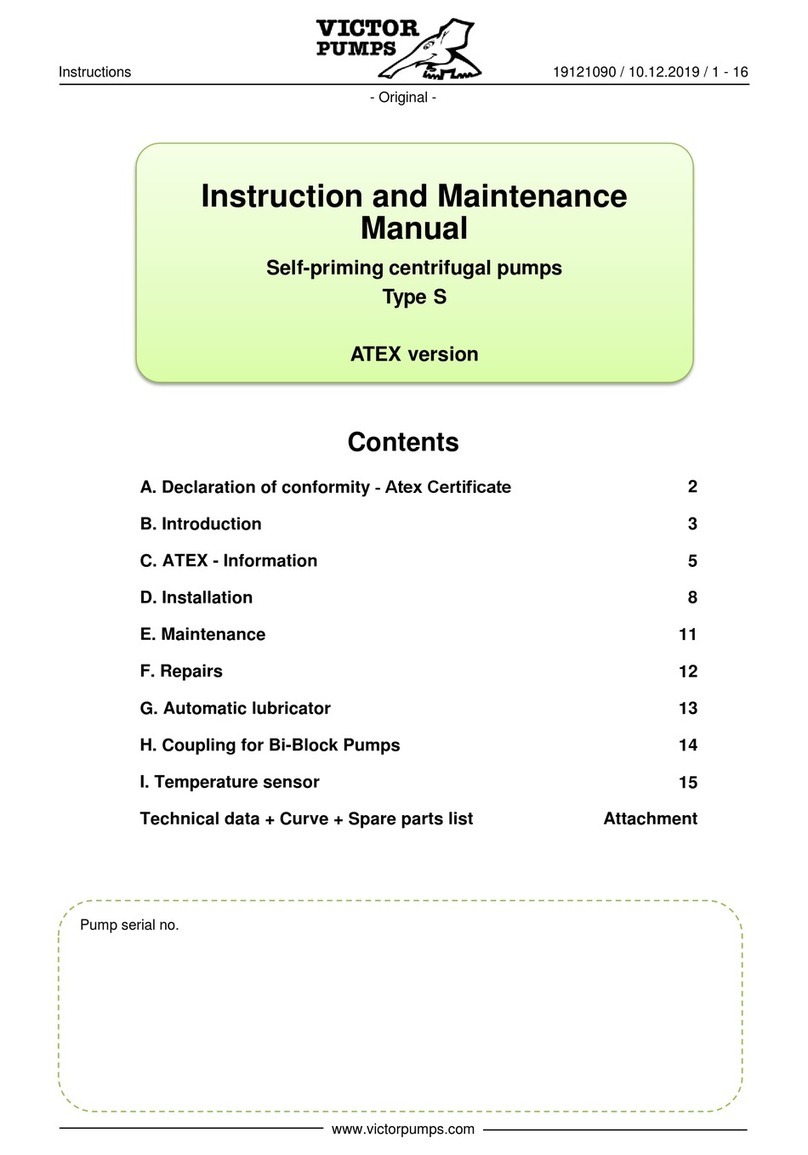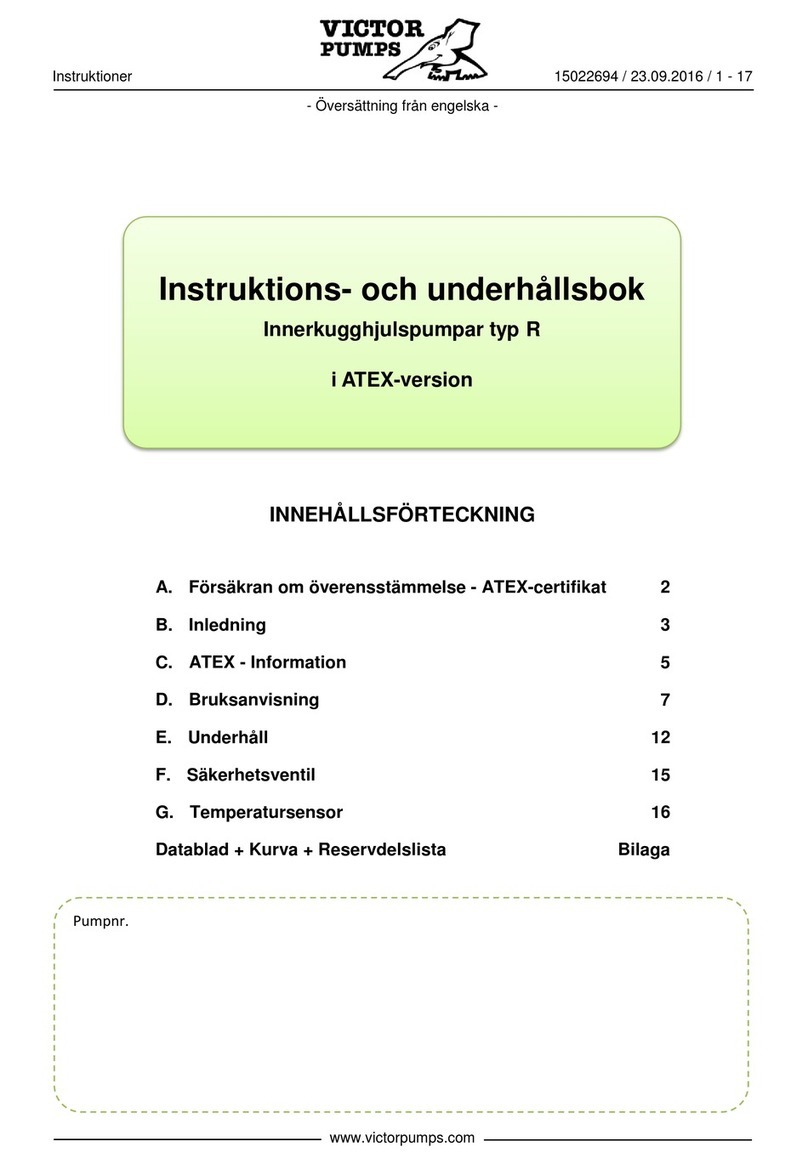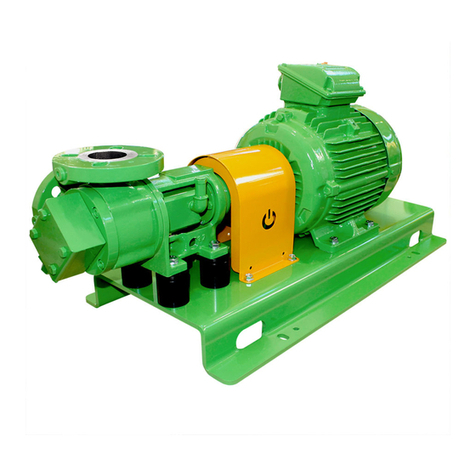
16090170 / 09.09.2016 / 5 - 8
- Original -
www.victorpumps.com
C. Operation
1. Installation
1.1 Set up the pump on a flat surface as near as possible to the liquid to be pumped. Make sure
that the surrounding is adequately ventilated.
1.2 Suction hose or pipe should be as short as possible and should have the same diameter as
the pump port. It is recommended minimize the use of curves, corners or necks. This will
reduce the priming time and ensure full capacity.
1.3 Check that any connections (threads, welds, gaskets, quick-couplings, valves, etc.) are
completely airtight: if necessary, coat them with grease.
1.4 It is advisable to use a suction filter to avoid to suction solids larger than those that pump can
accept. The value of the maximum pump solids is indicated in the attached curve.
1.5 In the event that a pump without a non-return valve stops working, the liquid could flow back.
To avoid this, fit a non-return valve on the delivery or suction side.
1.6 Connect the electric motor with authorized personal only (see section E “Electric Motor”, on
page 8).
2. First Start-up
2.1 Use the pump only in the authorized performances levels indicated in performance curve,
technical datasheet and instructions! The liquid should never be pumped on the limit of
vaporization, crystallization, polymerization or solidification.
2.2 The material of the pump must be compatible with the pumped liquid. The pump manufacturer
has no responsibility on this.
2.3 To self-prime the first time, the pump must be under water head. This means that the liquid
has already entered into the pump casing before the first start-up.
2.4 Check that direction of rotation is the same as shown by the arrow on the back of the pump
(clockwise when looking from the shaft or motor end, for the C 30 counterclockwise).
2.5 Open all valves. Otherwise the mechanical seal can be damaged.
2.6 Start the pump and check after some minutes if the pump is working as planned. The time to
reach the optimal operation should not exceed 2 min.
WARNING Any deviation from normal operating conditions (increased power consumption, temperature,
vibrations, noise etc.) or warning signals by monitoring equipment suggest malfunction. Inform
the responsible maintenance personnel at once to prevent the trouble from getting worse and
causing, directly or indirectly, serious physical injury or material damage.
In case of doubt disconnect the machine immediately!
3. Running
3.1 Start and stop the pump if necessary. The pump is designed for 6 starts per hour. More
frequent start cycles must be approved by the pump producer.
3.2 If the suction line is empty, it is necessary to fill it before to start the pump. The pump cannot
pump air.
4. Operating troubles
4.1 PUMP DOES NOT PRIME (pumps does not pump the liquid)
(a)Air leaks into the suction line (through couplings, threads, flanges, gaskets, hose clips, cuts,
etc.). It is difficult tofind thetrouble place.
(b)Level of liquid inside pump casing is too low or empty. Pump must be always full of liquid,
better if it is placed under water head.































